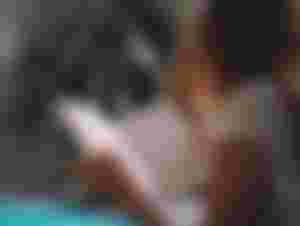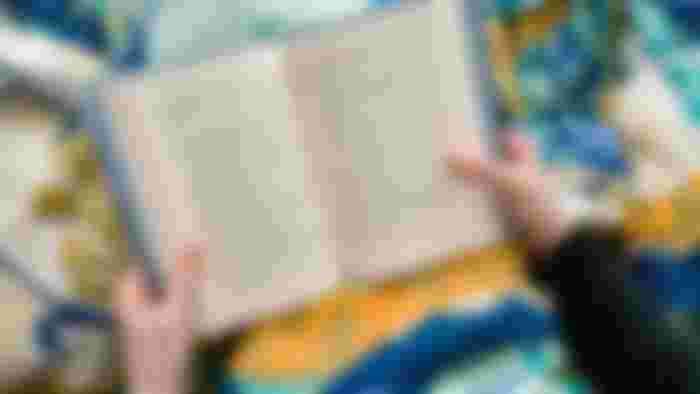How do you read a book?
Look at the cover, probably glance at the blurb; run your eye down the table of contents, perhaps; possibly rifle through the book... then plunge right in into Chapter One.
Right?

According to some author, this is only the first level of reading, called “Elementary” reading: and this is the only level the majority of readers in this world have reached. They posit three more levels: “Inspectional”, “Analytical” and “Syntopic”, each one more advanced than the previous. The major portion of the book is devoted to analytic reading, followed by brief exposition on the syntopic. It is the aim of the authors to make each reader of this tome into an analytic reader at least, if not a syntopic one: it is my opinion that they only succeed partially, but let’s go into that after analysing each of the levels as defined by the authors.

Elementary reading we have already seen. In inspectional reading, you first skim the book as a whole; give it a “once-over”, as it is. The authors, ever practical, suggest six steps to do this – most of them self-evident and what any serious reader usually does with an expository book (this book is mostly about reading expository material and of limited value in reading literature and poetry, but more about that later). The steps are:
1. Read the title and the preface
2. Study the table of contents
3. Check the index
4. Read the blurb
5. Look at the main chapters
6. Skim the book, reading it here and there
Next, read the book through fast, without getting stuck at the difficult places. If the book deserves our serious attention, we can come back to those difficult places in our next reading. The advantage of this “rapid-fire” approach is that we do not waste time on a book which deserves only a superficial reading. In the authors’ own words: “Every book should be read no more slowly than it deserves, and no more quickly than you can read it with satisfaction and comprehension.”
Analytical Reading
The next level, analytical reading, requires the reader to be demanding: the more you demand, the more you can extract out of a book. To do this, one has to ask four questions:
1. What is the book about, as a whole?
2. What is being said in detail, and how?
3. Is the book true, in whole or part?
4. What of it?
How ask these four questions is explained in detail, in the remaining part of the book.
Analytical reading has three stages. The first one is mainly concerned with classifying the book, and understanding its aim and structure. To do this, the authors suggest four rules.
1. You must know what kind of book you are reading, and you should know as early in the process as possible, preferably before you begin to read.
2. State the unity of the whole book in a single sentence, or at most a few sentences (a short paragraph).
3. Set forth the major parts of the book, and show how these are organised into a whole, by being ordered to one another and to the unity of the whole.
4. Find out what the author’s problems were.
The first rule classifies (“pigeonholes”) the book, by affixing it to a category, genre, etc.: the second is used to create a précis: the third expands the précis into an outline, thus revealing the underlying structure (“X-Raying” the book, as the authors name it) and the fourth defines the purpose of the book. The author presumably wrote it for a reason: he had some questions at the beginning, which he has presumably tried to answer through the book. The reader has to find out what these questions are.
If the first stage of analytical reading is related to the what , the second is related to the how ; how has the author attempted to solve the problem with which he started out. For this stage also, Adler and Van Doren proposes four rules.
1. Come to terms with the author by interpreting his key words.
2. Grasp the author’s leading propositions by dealing with his most important sentences.
3. Know the author’s arguments by finding them in, or constructing them out of, sequences of sentences.
4. Determine which of his problems the author has solved, and which he has not: and as to the latter, decide which the author knew he had failed to solve.
The argument here that any author, putting forth an argument, will use certain key words and terms (for example “natural selection” and “evolution” by Darwin in The Origin of Species). It is the reader’s duty to come to terms with the author, so that he does not misinterpret the author’s intentions by misreading the terms. Then on, it is an exercise in logic by understanding the propositions and arguments. This is not as difficult as it looks: in fact, we do it all the time, even though the exact logical terms may be unfamiliar to us. A proposition is nothing but the meaning contained within a declarative sentence: and arguments what the author uses to prove the truth of the proposition.
The fourth step is a little more difficult for the lay reader, and it will only come through practice. One needs to find out which of the problems presented the author had been able to solve: and if he had been unable to solve some, whether he knew he had failed or not. At this point of time, it is not important whether the reader agrees with the author. That comes later. Here, we are talking about the author’s own internal logic, and how far he has been able to present his arguments consistently in light of it, and how far he has been in successfully concluding his arguments.
In the third stage of analytical reading, the reader, for the first time, starts to apply his critical senses and begins to agree or disagree with the author. Here according to the authors of the current book, the reader has to follow certain etiquette, captured in the following three rules:
1. Do not begin criticism until one has completed the outline (first stage) and interpretation (second stage). Then one can agree, disagree or suspend judgement.
2. Do not disagree disputatiously or contentiously. Or in plain words, unless one can present factual evidence acceptable at least to oneself, disagreement with an author based on emotional prejudice should be avoided (easier said than done!).
3. Demonstrate that one knows the difference between knowledge and mere personal opinion by presenting good reasons for any critical judgement one makes.
The authors also provide special criteria for criticism: (1) show where the author is uninformed, (2) show where he is misinformed, (3) show where his illogical and (4) show where his analysis is incomplete.
Syntopic Reading
This is the fourth (and most advanced) level of reading, according to Adler and Van Doren – though I’d perhaps disagree. Here, the reader is engaged in researching books about one basic idea. For example, if you want to read up on, say evolution, you must first understand what the significant books are on the subject: then you must proceed to read them, and summarise the arguments, both pro and con, preferably remaining objective throughout. Phew! Not a very easy task.
Don’t worry, the authors give step-by-step instructions for this level also. First, create a bibliography of the subject and inspect all of the books to ascertain which are the relevant ones: then, do the following:
1. Do inspectional reading of the selected book to choose the passages which are most relevant to the subject at hand;
2. Establish a neutral terminology which is applicable to all the authors, so that all of them can be brought to the same terms;
3. Establish a set of neutral propositions, by framing a set of questions which all the authors can be seen as answering;
4. Range the answers on both sides of the issue. The issue may not always explicitly exist, and may have to be constructed by interpretation of the authors’ views (for example, in the case of evolutionary theory, “Intelligent Design” is a form of creationism even though the trappings of evolutionary theory are used);
5. Analyse the discussion by ordering the issues to throw maximum light on the subject.
The authors stress the need for dialectical objectivity throughout; that is, the reader is only expected to arrange and present the arguments so as to present an ordered discussion without taking sides. So the aim of syntopical reading is to “clear away the deadwood and prepare the way for an original thinker to make a breakthrough”.
***
Whoever has read through this review so far would be asking (him/her)self: “But that’s applicable to expository books, where the main aim is the dissemination of information? What about fiction? What about poetry? What about drama?” Well, the authors extend their methodology to all kinds of books, but according to me, it falls flat. All said and done, the methodology works only for expository works. And that is its main problem.
This book is not about literary theory or criticism: nor is it about literature appreciation. It is a self-help book on the lines of those on time management, attending interviews, etc. It outlines a methodology, the diligent following of which will guarantee results, according to its authors. It well may, for the major part of the book devoted to analytical reading gave me some insights on how to tackle books on difficult subjects like philosophy and political theory (the two stars are for that). But the book is extremely boring, and the authors’ insistence on applying their favourite methodology to all sorts of books was stretching things a bit (moreover, it takes all the fun out of reading!). And syntopic reading may make sense to an undergraduate preparing a dissertation, but is of little use to anybody else.
If anyone wants to read this book, I would recommend an inspectional reading concentrating mainly on the methodology of analytical reading only. The other parts are not worth the time spent on it.
I purchased a copy, but the book seems to be available free on the net (no idea about copyright issues!), so go ahead and try it if you want. Statutory warning: boredom ahead.

